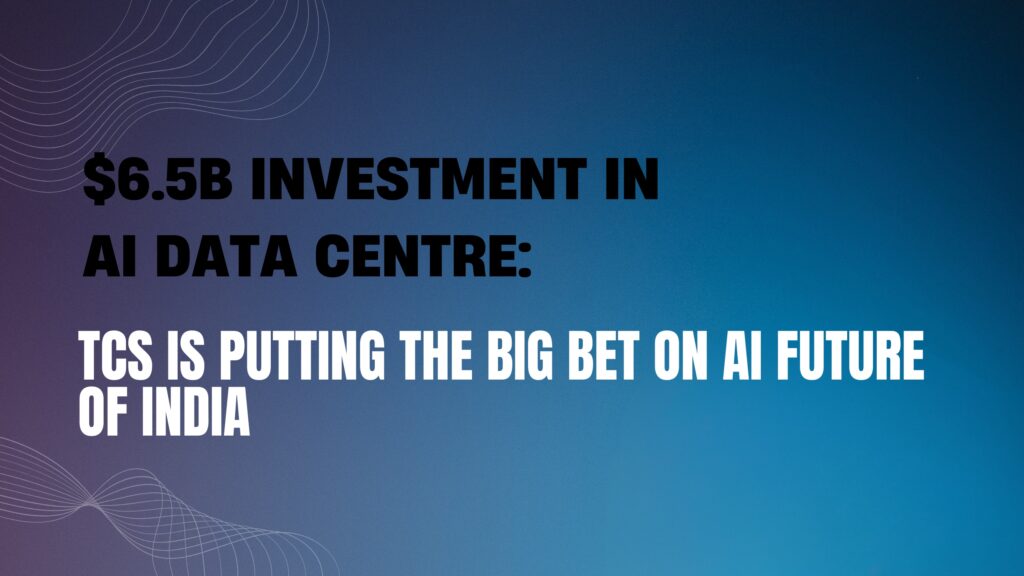Written By: Tanisha Malyan
$6.5B Investment in AI Data Centre: TCS is Putting the Big Bet on AI future of India
New Delhi, Oct 10, 2025 – Tata Consultancy Services (TCS) is planning to build a huge AI data centre in India, investing $6.5 billion. The project will have a capacity of 1 gigawatt (GW) which is about the same as all the data centres currently in India combined.
TCS CEO Krithi Krithivasan said the company will build the data centre in phases and expects to complete 1 GW of capacity in 5-7 years. Each 150 MW of AI computing power will cost around $1 billion and the total investment will be funded through both company funds and outside investors.
Purpose of the Data Centre:
The purpose of the centre is to enable TCS to further develop and enhance advanced AI services. In doing so, it will assist AI startups, technology companies, large cloud providers, and government initiatives and projects. The centre will largely be a supplementary data centre providing back up when other data centres are compromised.
TCS Chief Operating Officer Aarthi Subramanian stated that the data centre will allow TCS to encompass everything in AI; Infrastructures and applications; it will enable TCS to provide solutions for clients including training AI models, running AI applications, and hosting AI services for clients all from India.
Effects on The Indian Market:
India’s data centre market is still emerging, as it currently has approximately 1.2 GW of capacity. Experts forecast that data centre demand could increase by an order of magnitude approximately 10x – in the next five to six years. This second factor suggests that TCS’s investment is impactful because it increases India’s standing in the AI infrastructure space. The project may also signal a shift for TCS, as historically they have focused on outsourcing IT services, and are now making a transition into capital-weighed AI computing, which gives them a second revenue source as well as a technological edge.
Following the announcement, TCS stock increased somewhat – likely an indication of investor confidence in TCS’s AI investments.







